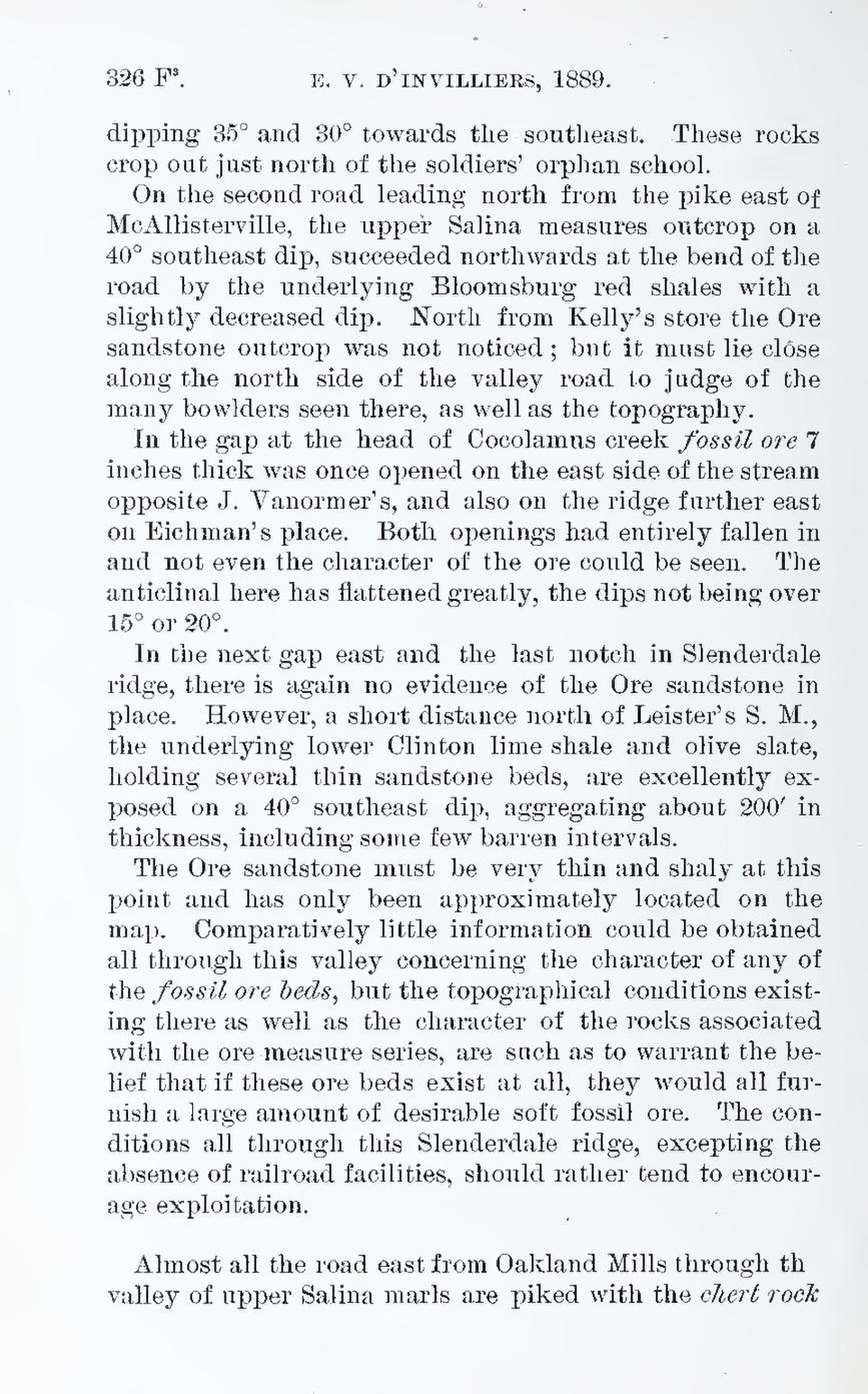dipping 35° and 30° towards the southeast. These rocks crop out just north of the soldiers’ orphan school.
On the second road leading north from the pike east of McAliisterville, the upper Salina measures outcrop on a 40° southeast dip, succeeded northwards at the bend of the road by the underlying Bloomsburg red shales with a slightly decreased dip. North from Kelly’s store the Ore sandstone outcrop was not noticed; but it must lie close along the north side of the valley road to judge of the many bowlders seen there, as well as the topography.
In the gap at the head of Cocolamus creek fossil ore 7 inches thick was once opened on the east side of the stream opposite J. Vanormer’s, and also on the ridge further east on Eichman’s place. Both openings had entirely fallen in and not even the character of the ore could be seen. The anticlinal here has flattened greatly, the dips not being over 15° or 20°.
In the next gap east and the last notch in Slenderdale ridge, there is again no evidence of the Ore sandstone in place. However, a short distance north of Leister’s S. M., the underlying lower Clinton lime shale and olive slate, holding several thin sandstone beds, are excellently exposed on a 40° southeast dip, aggregating about 200′ in thickness, including some few barren intervals.
The Ore sandstone must be very thin and shaly at this point and has only been approximately located on the map. Comparatively little information could be obtained all through this valley concerning the character of any of the fossil ore beds, but the topographical conditions existing there as well as the character of the rocks associated with the ore measure series, are such as to warrant the belief that if these ore beds exist at all, they would all furnish a large amount of desirable soft fossil ore. The conditions all through this Slenderdale ridge, excepting the absence of railroad facilities, should rather tend to encourage exploitation.
Almost all the road east from Oakland Mills through th valley of upper Salina marls are piked with the chert rock
